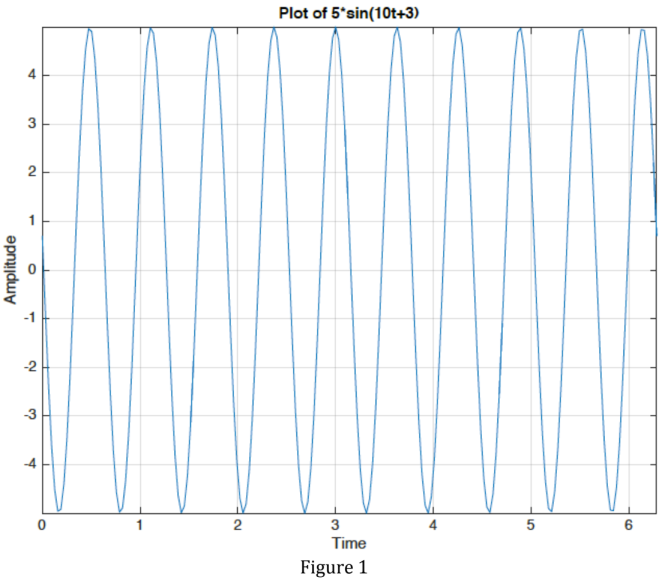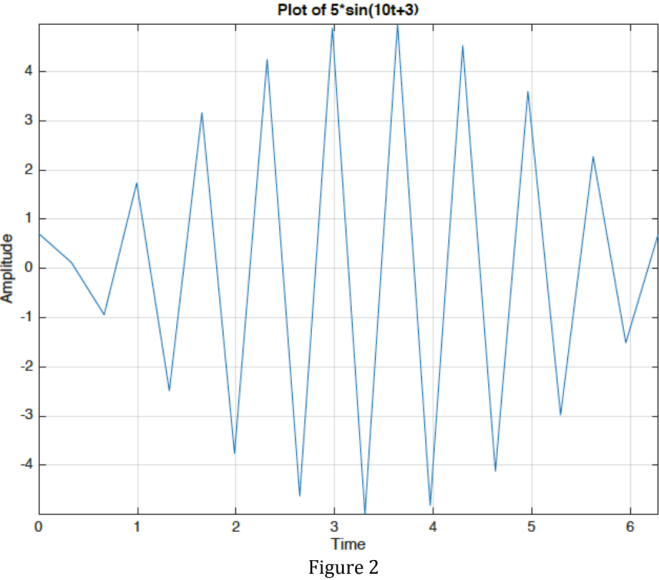Let us consider a simple sinusoidal signal
x(t) = 5sin(10t + 3)
This is a signal with an amplitude of 5, the angular frequency of 10 and phase of 3. The Nyquist condition demands that the angular frequency, mod(𝜔) ≤ pi/delta t.

For the above figure 1, we took 𝜔 to be 10 and pi/delta t is 99.5, so the Nyquist condition satisfies and we do not see the aliasing. Here the sampling rate, Δ𝑡 is 0.0316.
Let us see what happens when we take the pi/delta t to be less than 𝜔.

In this case, we took the sampling rate, Δ𝑡 to be 0.3307. Here the pi/delta t is 9.5000 which is less than 𝜔. Hence the Nyquist condition is not satisfied and there is a clear aliasing. The sinusoidal signal does not appear to be sinusoidal.
Matlab Codes:
clear; close all; clc
t=linspace(0,2*pi,20);
dt=t(3)-t(2)
omegaN=pi/dt
wf=5*sin(10*t+3);
plot(t,wf)
grid on
axis tight
xlabel('Time')
ylabel('Amplitude')
title('Plot of 5*sin(10t+3)')
—Utpal Kumar (IES, Academia Sinica)
One thought on “Aliasing and Nyquist Condition”